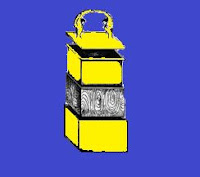Parshas Tetzaveh - Measure for Measure

~ Thoughts on the Parsha ~ Parshas Tetzaveh Measure for Measure By: Daniel Listhaus וְעָשִׂיתָ בִגְדֵי קֹדֶשׁ לְאַהֲרֹן אָחִיךָ לְכָבוֹד וּלְתִפְאָרֶת : וְאַתָּה תְּדַבֵּר אֶל כָּל חַכְמֵי לֵב אֲשֶׁר מִלֵּאתִיו רוּחַ חָכְמָה וְעָשׂוּ אֶת בִּגְדֵי אַהֲרֹן לְקַדְּשׁוֹ לְכַהֲנוֹ לִי וְחֵשֶׁב אֲפֻדָּתוֹ אֲשֶׁר עָלָיו כְּמַעֲשֵׂהוּ מִמֶּנּוּ יִהְיֶה זָהָב תְּכֵלֶת וְאַרְגָּמָן וְתוֹלַעַת שָׁנִי וְשֵׁשׁ מָשְׁזָר “You shall make garments of sanctity for Aharon your brother, for glory and for splendor. And you shall speak to each of the wise-hearted people whom I have invested with a spirit of wisdom, and they shall make the garments of Aharon, to sanctify him, so that he shall be a Kohen to Me.” - Tetzaveh 28:2-3 “...[And] the cheishev with which he is beautified, which is above it, like its work, of it shall be of gold, turquoise wool, purple wool, scarlet wool, and twisted linen.” - Tetzaveh 28:8 There is no doubt that the bigdei kehu



